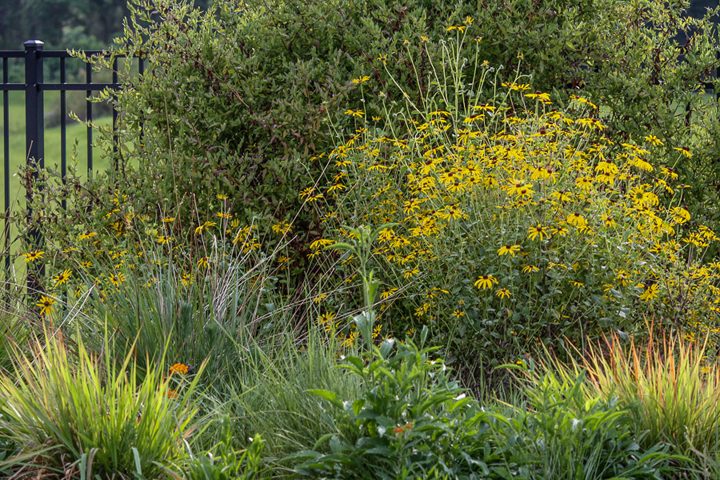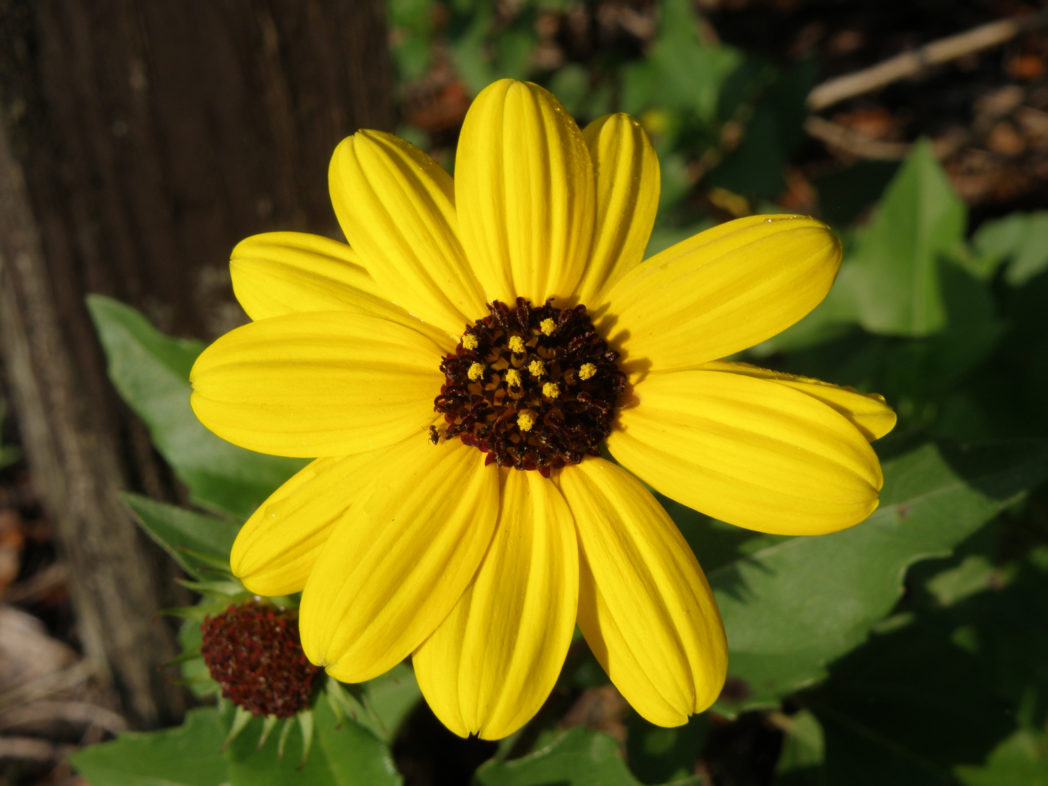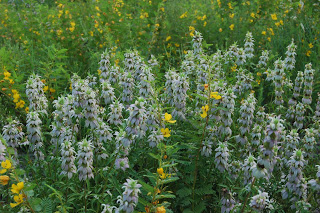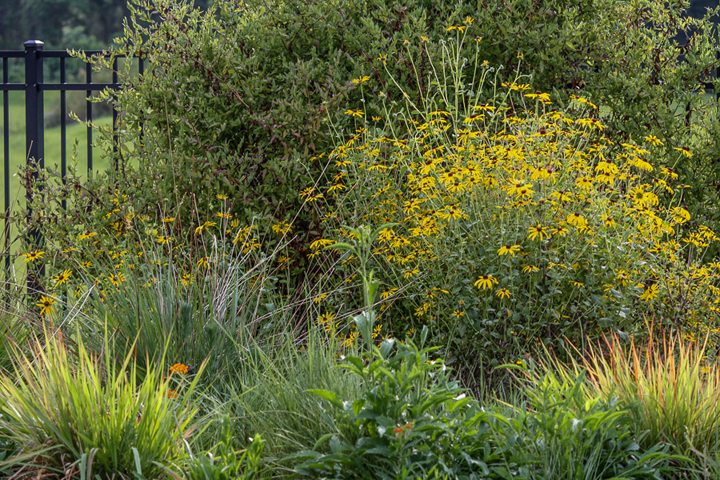When wildflowers blow in the wind…
…and when that wind is a hurricane, you can be sure there’s some work to do afterward. Here’s how to revive your wild garden.
by Claudia Larsen
Lots of Florida’s native wildflowers start growing and blooming in spring, thriving through alternating rain and drought periods, and adapting well to site conditions. As summer progresses many of our fall-blooming wildflowers become tall and stately, forming backdrops and filling fence rows as they reach peak bloom from September through December. But this also is when storms increase, bringing intense waves of wind and rain. And there are always those unpredictable hurricanes.
Here’s how my wildflower garden survived Hurricane Irma’s big blow and steps you can take to hopefully rescue your plantings, too.

I am lucky to live in a well-drained area that does not hold water for more than one or two days. Standing water is not good for most Florida wildflowers, but there are those that adapt to wet conditions, including some species of Rattlesnakemaster (Eryngium spp.), Florida paintbrush (Carphephorus corymbosus), Pale meadowbeauty (Rhexia spp.), asters (Sympyotrichum spp.), tickseed (Coreopsis spp.), Lobelia spp. and sunflowers (Helianthus spp.).
At the end of September, my Tall ironweed (Vernonia angustifolia) plants were 5 feet tall and filled with corymbs of small purple flowers that have started to form clusters of brown fuzzy seed heads. Ironweed has thick woody stems that are very sturdy, but the stem centers are hollow, so they topple easily. I cut off broken stems that are lying on the ground, leaving the stem stubs at the plant base.

Sturdier Narrowleaf sunflowers (Helianthus angustifolius) are waiting in the wings for their turn to take over with bright yellow flowers on plants ranging from 3 to 6 feet tall. And Frostweed (Verbesina angustifolia) is grouped like soldiers, 7 feet tall and mostly holding one another up. Those that broke at the base received the same treatment at the ironweeds.
Spotted beebalm (Monarda punctata) and Forked bluecurls (Trichostema dichotomum) are about 4 feet tall and 3 feet wide. Like small shrubs, they fill in between wands of purple Blazing star (Liatris spp.), yellow Goldenrod (Solidago spp.) and White bloodleaf (Iresine diffusa). Partridge pea (Chamaecrista fasciculata) — a favorite of yellow Sulphur butterflies — is also in full bloom. Just about all these shrub-size wildflowers are badly tilted and touching the ground after Hurricane Irma. I gently tilted some upright and placed tomato stakes near the center of each plant to stabilize them. I also tapped the soil around the plant base to help roots regain optimum soil contact, and watered them to reduce stress.

I left many as they were because they were in full flower and the butterflies and bees didn’t seem to care. Because these are mostly annuals, I typically don’t trim them, but I did prune some of the larger Horsemint, Frostweed and Ironweed by one-half to two-thirds. The plants should sprout more leaves at their bases and maybe even bloom sporadically by December.
The slender wandlike flowers did fine because they were protected by the grasses around them.
The “lower layer” of my garden is an assortment of wildflowers from 8 to 24 inches tall, including Black-eyed Susan (Rudbeckia hirta), Purple coneflower (Echinacea purpurea) and Blue porterweed (Stachytarpheta jamaicensis) with fillers of Lovegrass (Eragrostis spectabilis) and Lopsided indiangrass (Sorghastrum secundum). The leaves on these plants look a little ragged from windburn, but I know they will go into dormancy and return next summer with fresh foliage.
I had trimmed stringy old stems of my groundcover of Dune sunflower (Helianthus debilis) back to 3 feet in August, and it had begun to renew growth, which was virtually unharmed in the storm. However, all my Blanketflower (Gaillardia pulchella) rotted because of excessive moisture (I am hoping there is a seed bank from fallen flowers, but they probably rotted at well).
It was amazing how many butterflies seemed to appear right after the storm — and they were looking for nectar. I was glad I had lots of Tall elephantsfoot (Elephantopus elatus). The plants were virtually unharmed by the wind, and their tiny flowerheads attracted all sizes of butterflies. They will bloom through December in Central Florida.
The power of nature is amazing, but just as incredible are wildflowers’ toughness and adaptability to conditions that cannot be controlled by humans.
Claudia Larsen is a Florida Wildflower Foundation contractor and owner of Micanopy Wildflowers nursery in Micanopy.

